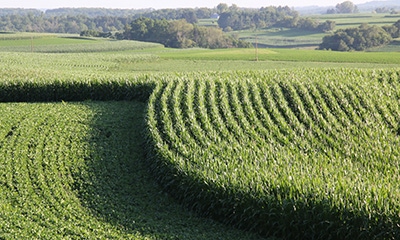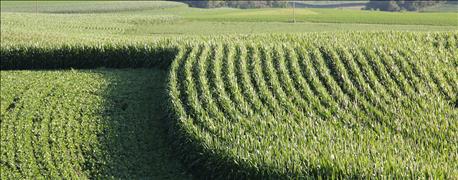
Dennis Badtke, chief appraiser for Badgerland Financial, says falling milk prices in 2015 and low crop prices for three years in a row are the primary reasons farmland values in Wisconsin are declining.
Badtke says he is seeing strong prices paid for some land this spring but prices are variable.
"Some areas are seeing strength and some are not," he says. "There aren't a lot of sales. We have people in strong dairy areas still buying land," Badtke says. "We're seeing pockets where it is still showing strength. There is some apprehension in the market. Two years ago, if land came up for sale, it sold quickly. Today, it's not always selling."

Farmland has been a good investment
Arlin Brannstrom's numbers illustrate what Badtke is saying. Brannstrom is faculty associate at the University of Wisconsin Center for Dairy Profitability in Madison,
A total of 90,807 acres of Wisconsin farmland sold in 2015 compared to 94,459 acres in 2014 and 131,837 acres in 2012. Eighteen percent of the land sales in 2015 were less than $2,000 per acre and only 17% of sales had prices above $6,000 per acre.
"While the high priced sales make good headlines, there were very few sales above $10,000 per acre," he notes.
According to Brannstrom east central Wisconsin continued to see the biggest percentage increase in land values over the past seven years averaging $4,210 per acre in 2009 to $7,036 in 2015.
"This is also the fastest growing milk production region in the state," he says. "The southwest, south central and west central districts experienced declines in average sale prices in 2015. The west central district sold the most acres and the northeast district sold the fewest acres. The average price per acre for bare land in the northern districts was nearly unchanged last year."
Several sources use surveys of farmers, bankers, realtors and appraisers to measure changes in land values each year.
"While this approach is easy to conduct, these opinion surveys can be hard to interpret," he says. "News of high priced sales travels quickly – but these sales are often the exception."
Fortunately, Brannstrom says, the Wisconsin Department of Revenue provides an alternative source of agricultural land sales data.
"A transfer return tax is collected each time a property is sold, and a transfer return form is collected with the tax. Information from these transfer return forms is the source for this analysis."
Between 2010 and 2015, nearly eight thousand bare agricultural land transfer returns were used to compute weighted average sale prices per acre.
Ag land ownership structures are changing rapidly in many parts of Wisconsin, Brannstrom says
"Up until the last decade, most property was bought and sold between individual owners or as tenants in common," he explains. "Individuals are still the most common sellers although the percentage of acreage sold by LLCs and trusts has increased from 23% to 28% between 2010 and 2015.
Land sold by corporations and general partnerships is only a small percentage of the total.
"As farming operations become larger and real estate ownership interests more dispersed, it is expected that sole proprietorships will become less prevalent," Brannstrom says.
High land values can be both good and bad for established farmers.
"The appreciation in land value is only realized when the assets are sold," he says. "In most cases the ongoing business is neither directly responsible for nor directly benefited by changes in land values. High land values provide the retirement cushion for “last generation” farm businesses. However, high land prices make it more difficult for young farmers to get started without significant help from family members or other benefactors."
Dairy farming in southeastern, east central and south central Wisconsin is under great pressure from competing land uses.
"If the trend continues, dairy production will continue to shift away from these parts of Wisconsin," he says.
Although dairy farming is well suited to Wisconsin's climate, topography and infrastructure, the continued survival of a viable dairy industry depends upon access to affordable land resources.
"Few things are as illiquid as land," Brannstrom says. "Unlike stocks, bonds and commodities, one can only estimate the value of real estate until a willing buyer and seller consummate a sale. At least in recent years, agricultural land has been a much better investment than many other alternatives. However, that may not always be the case."
About the Author(s)
You May Also Like






